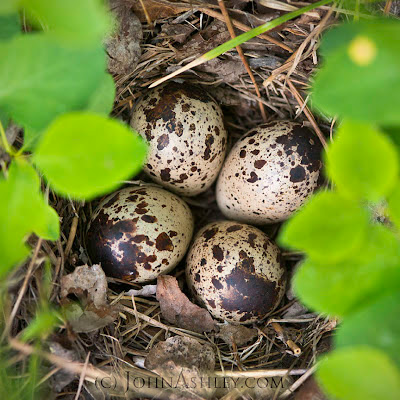Let's be honest. For most males, it doesn't take much effort to become a father. But Spotted Sandpiper dads aren't like most males. They are fully responsible for the two behaviors that we typically think of as the most motherly - incubating eggs and raising young. While dad's caring for the kids, sandpiper mom spends her time looking for more males to mate with.
 |
| Adult Spotted Sandpiper (sexes look the same) |
Most species in the sandpiper family breed farther north, up in the arctic and subarctic, where the breeding season is short and there's barely enough time to lay one set of eggs and raise one set of young. A sandpiper egg equals about 20% of the female's weight and, physiologically, she can't lay more than four eggs in quick succession. So those northern sandpipers are limited to one clutch per year due to weather and physiological constraints.
But Spotted Sandpipers have colonized temperate areas further south, where the nesting season is longer. She's still constrained to four eggs in a row but, by shifting the egg and chick tending duties to dad, she can increase her production. In fact, with short breaks between clutches, our southern sandpipers can lay up to five sets of eggs during a single breeding season.
Female Spotted Sandpipers arrive first on the breeding grounds each spring. She'll fight to kick other females out of her territory, and she'll display to attract the arriving males into her territory. Her home will eventually include the smaller territories of several males that she'll mate with, one at a time, over the breeding season.
Here's the kicker. In areas with few Spotted Sandpipers, the female mates with just one male. Instead of spending her energy looking for another mate, she stays home to help incubate the eggs and raise the young.
In other words, Spotted Sandpipers maintain flexible behaviors that enable them to produce extra young when conditions allow. And in the natural world, how many young you produce is the one and only measure of success.
Fortunately, some human dads have also learned that there's more than one way to help mom succeed.
 |
| Ground nest of a Spotted Sandpiper with four camouflaged eggs |

